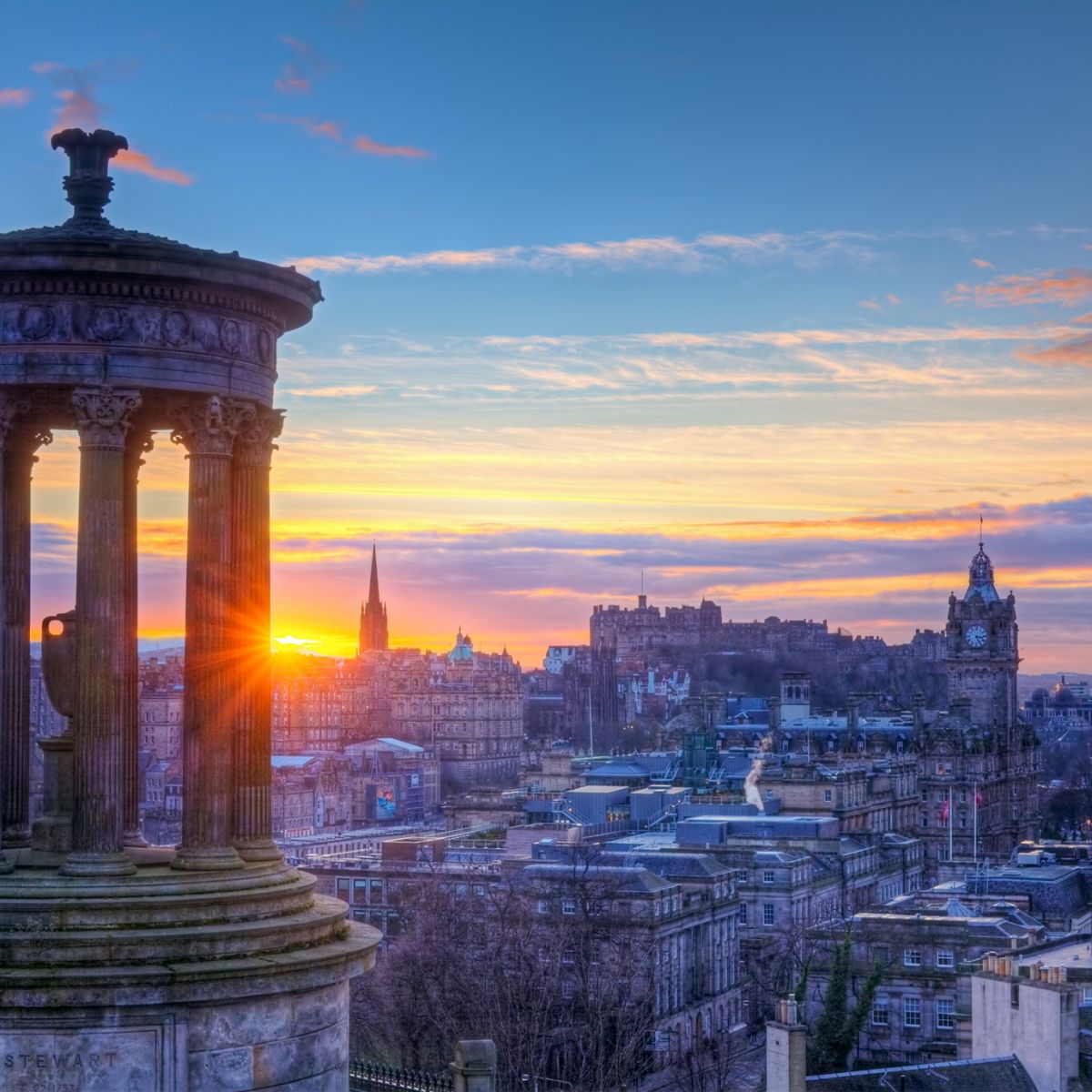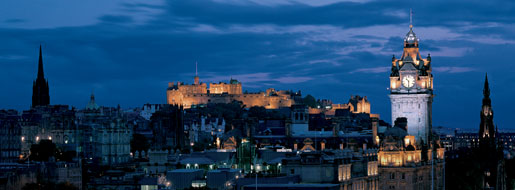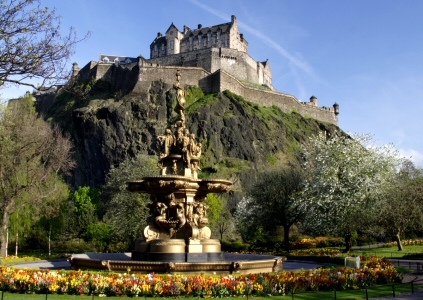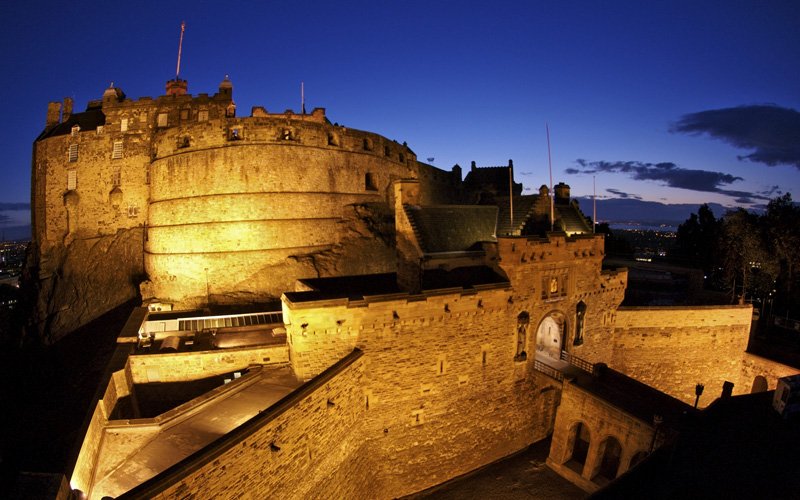| Edinburgh is the capital and second largest city in Scotland. Founded on Castle Rock by ancient British tribes who utilised the strategic elevated position of the volcanic rock. It is named after Edwin, King of Northumbria in the 7th century. Edinburgh did not develop into a town until the 11th century, but it soon grew and in 1532 it was declared Scotland's capital. The city itself is broken up into two sections: the Old Town and the New Town. The narrow medieval streets of the Old Town stretch east from Castle Hill to Holyrood Abbey. Many medieval buildings are here, including the Parliament House, St Giles Cathedral, the house of John Knox, and Brodie's Close. The New Town is just north of the castle. It was built in the early 19th century and contains many elegant streets lined with Georgian buildings. A beautiful view of impressive Castle hill can be seen from Princes Street. At night this view is even more spectacular. |  |
| Edinburgh has very unpredictable weather, sunny summer days sometimes rapidly changing into damp, showery conditions or vice versa. Summers are generally fine though, with mild temperatures and bright sunshine, although days might start out misty. Winters are long and damp with many frosty days. December, January and February are the rainiest months, but snow in winter is infrequent. The best time to travel to Edinburgh is during spring when parks are a riot of colour and the weather pleasant. |
| Edinburgh Castle has been the home of Scottish Royalty for many centuries. The Scottish Crown Jewels are kept in the Old Royal Palace, and it was there, in a small cramped room, that Mary Queen of Scots gave birth to the future King James VI. Inside the castle walls is the 11th century St Margaret's Chapel. Built in 1076, this is the oldest roofed building in Scotland. The castle is open to visitors and guided tours are given regularly.Edinburgh contains many art galleries and museums. The National Gallery of Scotland, in the New Town, is by far the most impressive. A large collection of European and British paintings from the Renaissance to the 20th century are on display. Famous artists include Rembrandt, Van Gogh, Ramsay and Raphael. The art collection is surely outside the personal budget of most people and worth millions of euros, pounds and dollars. Today Edinburgh is a lively city and a huge cultural centre. |
| Edinburgh is Scotland's administrative, financial, legal, medical, and insurance center, and the city has become an important nuclear and electronics research center. The port imports grain, fertilizer, petroleum, minerals, wood pulp, cement, fruit, and vegetables. Edinburgh is a large brewing center, has a thriving publishing industry, and produces great quantities of high-grade paper. There are metalworks and rubber and engineering works. Other industries are distilling; the manufacture of glassware, drugs, and chemicals; and shipbuilding. The Waverly railway station is the second largest in Great Britain. Tourism is of major importance. |

















